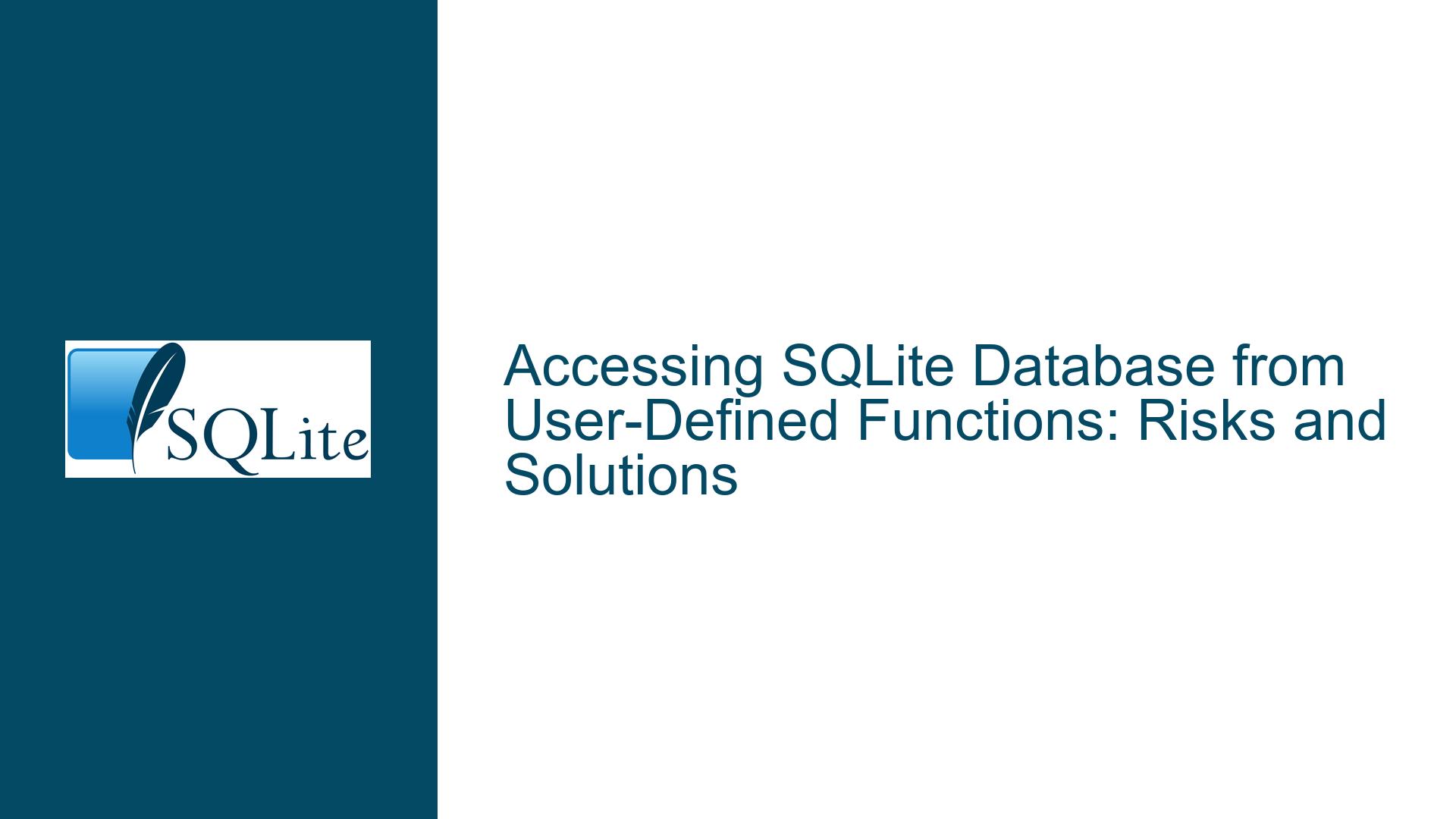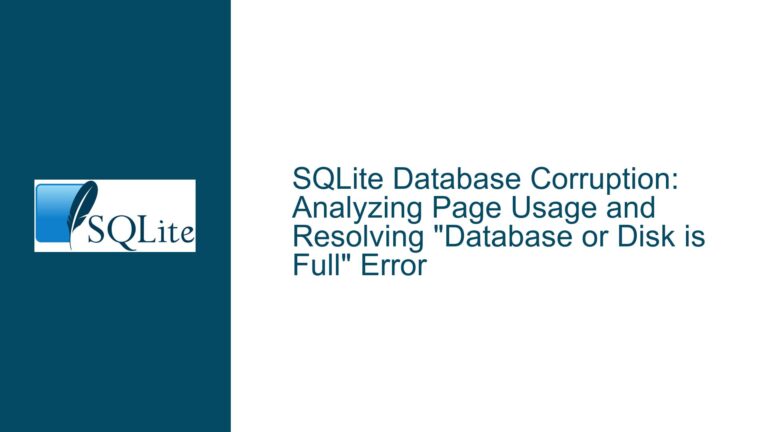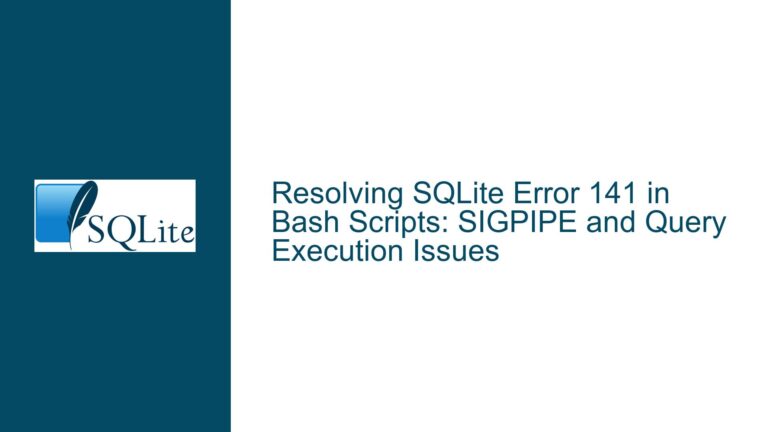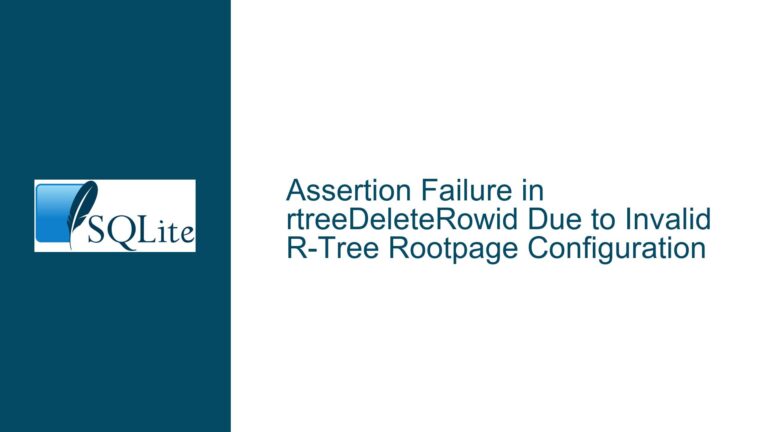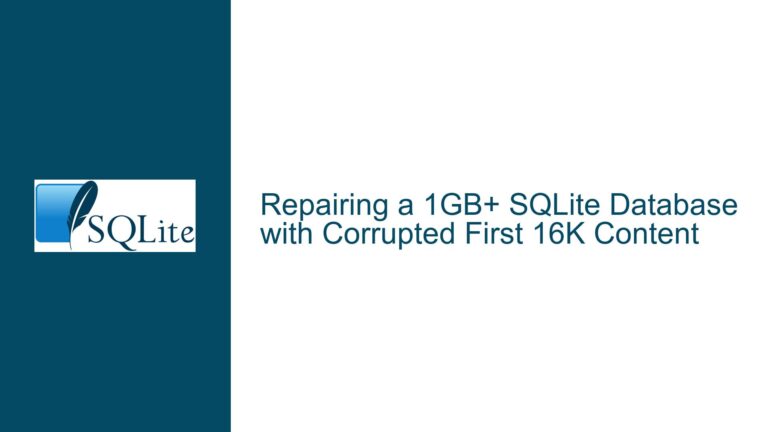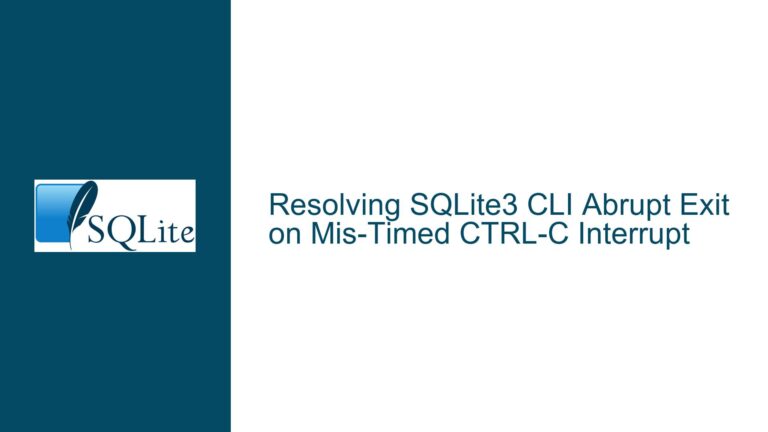Accessing SQLite Database from User-Defined Functions: Risks and Solutions
Understanding the Context Pointer and Database Handle in User-Defined Functions
In SQLite, user-defined functions (UDFs) are a powerful feature that allows developers to extend the functionality of SQLite by writing custom functions in C or other programming languages. These functions can be called directly within SQL queries, enabling complex computations or operations that are not natively supported by SQLite. However, one of the more advanced use cases involves accessing the SQLite database itself from within a user-defined function. This capability, while powerful, introduces a set of challenges and risks that must be carefully managed to avoid undefined behavior and potential data corruption.
The core mechanism for accessing the database from within a UDF revolves around the sqlite3_context structure, which is passed as the first argument to every user-defined function. This structure contains metadata about the function’s execution context, including a reference to the database connection (sqlite3* handle) that is executing the query. By using the sqlite3_context_db_handle function, developers can retrieve this database handle and subsequently execute additional SQL statements within the same database connection.
However, this approach is not without its pitfalls. The primary concern is that any modifications made to the database (such as INSERTs, UPDATEs, or DELETEs) while a query is still being processed can lead to undefined behavior. This is because SQLite’s query execution engine assumes a consistent state of the database throughout the duration of a query. If the state of the database changes mid-query due to actions taken by a UDF, the results of the query may become unpredictable or inconsistent.
The Risks of Modifying Database State Within a User-Defined Function
When a user-defined function modifies the database state during the execution of a query, it introduces a scenario where the query’s results may depend on the order in which rows are processed. For example, consider a SELECT query that calls a UDF on each row. If the UDF performs an UPDATE operation on another row in the same table, the subsequent rows processed by the query may see the effects of that UPDATE. This can lead to a situation where the query’s results are not deterministic, as they depend on the internal order of row processing, which is not guaranteed by SQLite.
Furthermore, all changes made by a UDF are part of the same transaction as the query that invoked the function. This means that if the query is part of a larger transaction that is later rolled back, any changes made by the UDF will also be rolled back. While this ensures transactional consistency, it also means that developers must be cautious about the scope and impact of changes made within UDFs, as they may not be immediately visible or persistent.
Best Practices for Safely Accessing and Modifying Databases in User-Defined Functions
To mitigate the risks associated with accessing and modifying the database from within a user-defined function, developers should adhere to a set of best practices. First and foremost, it is generally advisable to avoid modifying the database state within a UDF unless absolutely necessary. If modifications are required, they should be carefully designed to minimize their impact on the query’s results and overall database consistency.
One approach is to limit the scope of changes made by the UDF to rows that are not part of the current query. For example, if the UDF needs to update a different table or a set of rows that are not being processed by the query, the risk of introducing inconsistencies is reduced. Additionally, developers should ensure that any changes made by the UDF are idempotent, meaning that they can be safely applied multiple times without causing unintended side effects.
Another important consideration is the use of transactions. If a UDF must modify the database, it should do so within a separate transaction that is distinct from the query’s transaction. This can be achieved by using the sqlite3_exec function to execute a new SQL statement that begins a transaction, performs the necessary modifications, and then commits the transaction. By isolating the changes in a separate transaction, the UDF can avoid interfering with the query’s execution and ensure that its changes are only applied if they are successful.
Finally, developers should thoroughly test any UDFs that access or modify the database to ensure that they behave as expected under a variety of conditions. This includes testing with different query plans, transaction isolation levels, and concurrent database access scenarios. By rigorously testing UDFs, developers can identify and address potential issues before they impact production systems.
Conclusion
Accessing and modifying an SQLite database from within a user-defined function is a powerful but potentially risky technique. By understanding the underlying mechanisms, recognizing the risks, and following best practices, developers can safely leverage this capability to extend the functionality of SQLite while maintaining database consistency and reliability. However, it is crucial to approach this technique with caution and to thoroughly test any UDFs that interact with the database to ensure that they behave as intended.
